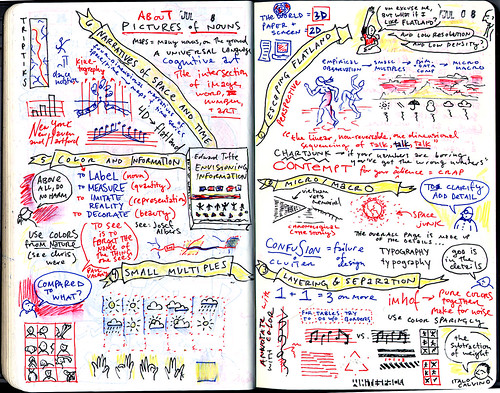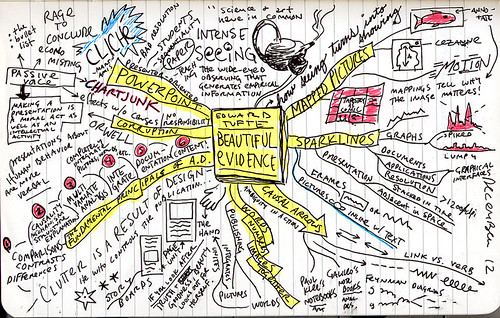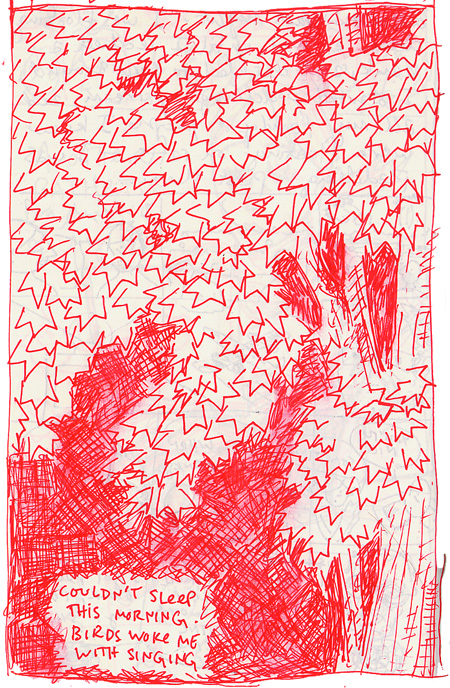This is a mindmap I did of Edward Tufte’s Envisioning Information.
Not quite as fun for me as the one I did for Beautiful Evidence.
I wonder if that has something to do with the fact that this was my second time reading Envisioning Information? Taking notes on a book you’ve already read isn’t quite as fresh — you’re not as excited about the material, the new things you choose to single out.
One thing I did right, though, was make the map on both pages of my sketchbook, instead of just one. The bigger the paper, the more room you have for mapping.



